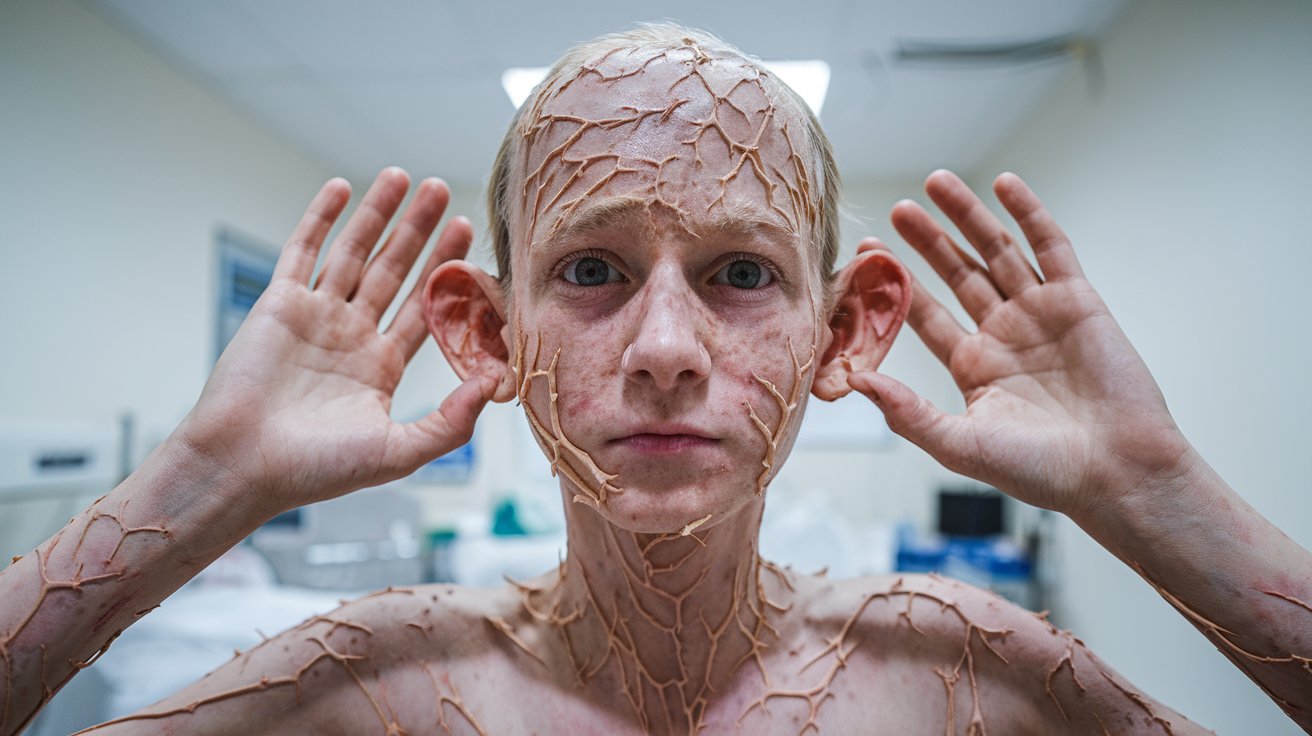
Ichthyosiform erythroderma corneal involvement deafness is a rare genetic disorder that affects the skin, eyes, and hearing. Characterized by thick, scaly skin, this condition often leads to discomfort and social challenges. Corneal involvement can cause vision problems, making daily tasks difficult. Hearing loss adds another layer of complexity, impacting communication and quality of life. Understanding this condition is crucial for those affected and their families. This blog post will provide 25 essential facts about ichthyosiform erythroderma corneal involvement deafness, offering insights into its symptoms, causes, and management strategies. Whether you're a patient, caregiver, or simply curious, these facts will help you grasp the intricacies of this rare disorder.
Key Takeaways:
- Ichthyosiform erythroderma is a rare genetic skin disorder that can affect the skin, eyes, and hearing. It requires regular eye and hearing exams, and genetic testing for diagnosis and management.
- Treatment involves moisturizers, retinoids, and systemic treatments, along with regular follow-ups and emotional support. Understanding the genetic aspects and family history is crucial for managing this condition.
Understanding Ichthyosiform Erythroderma
Ichthyosiform erythroderma is a rare genetic skin disorder. It affects the skin, eyes, and sometimes hearing. Here are some intriguing facts about this condition.
- Ichthyosiform erythroderma is characterized by widespread redness and scaling of the skin.
- The term "ichthyosiform" comes from the Greek word for fish, reflecting the fish-scale appearance of the skin.
- This condition is usually present at birth or develops shortly after.
- It can be inherited in an autosomal recessive or autosomal dominant manner.
- There are several types of ichthyosiform erythroderma, each with varying severity and symptoms.
Corneal Involvement in Ichthyosiform Erythroderma
The eyes can also be affected by ichthyosiform erythroderma. Corneal involvement is a significant concern for those with this condition.
- Corneal involvement can lead to dryness and irritation of the eyes.
- Patients may experience photophobia, which is sensitivity to light.
- Keratitis, or inflammation of the cornea, is common in individuals with this condition.
- Corneal opacities can develop, leading to vision problems.
- Regular eye exams are crucial for managing and monitoring eye health in these patients.
Deafness and Ichthyosiform Erythroderma
Hearing loss is another potential complication of ichthyosiform erythroderma. Understanding how this condition affects hearing is essential.
- Deafness can occur due to the buildup of skin scales in the ear canal.
- Conductive hearing loss is the most common type associated with this condition.
- Hearing aids may be necessary for those with significant hearing impairment.
- Regular hearing tests are important for early detection and management.
- Ear hygiene is crucial to prevent the buildup of scales and maintain hearing.
Genetic Aspects of Ichthyosiform Erythroderma
The genetic basis of ichthyosiform erythroderma is complex. Here are some facts about its genetic aspects.
- Mutations in several genes can cause ichthyosiform erythroderma.
- The most common genes involved are TGM1, ALOX12B, and ALOXE3.
- Genetic testing can help diagnose the specific type of ichthyosiform erythroderma.
- Carrier testing is available for family members of affected individuals.
- Genetic counseling is recommended for families with a history of the condition.
Treatment and Management
Managing ichthyosiform erythroderma requires a comprehensive approach. Here are some key points about treatment and management.
- Moisturizers and emollients are essential for keeping the skin hydrated.
- Topical retinoids can help reduce scaling and improve skin texture.
- Systemic treatments, such as oral retinoids, may be necessary for severe cases.
- Regular follow-ups with dermatologists, ophthalmologists, and audiologists are crucial.
- Support groups and counseling can provide emotional support for patients and families.
Final Thoughts on Ichthyosiform Erythroderma
Understanding Ichthyosiform Erythroderma with corneal involvement and deafness can be challenging, but knowing the facts helps. This rare genetic disorder affects the skin, eyes, and hearing, making daily life tough for those who have it. Early diagnosis and treatment can improve quality of life. Genetic counseling is crucial for families dealing with this condition. Researchers continue to study Ichthyosiform Erythroderma to find better treatments and possibly a cure. Awareness and support for affected individuals and their families are essential. By spreading knowledge, we can foster a more inclusive and understanding community. Remember, every bit of information helps in the fight against rare diseases. Stay informed, stay supportive, and always be kind.
Frequently Asked Questions
Was this page helpful?
Our commitment to delivering trustworthy and engaging content is at the heart of what we do. Each fact on our site is contributed by real users like you, bringing a wealth of diverse insights and information. To ensure the highest standards of accuracy and reliability, our dedicated editors meticulously review each submission. This process guarantees that the facts we share are not only fascinating but also credible. Trust in our commitment to quality and authenticity as you explore and learn with us.
